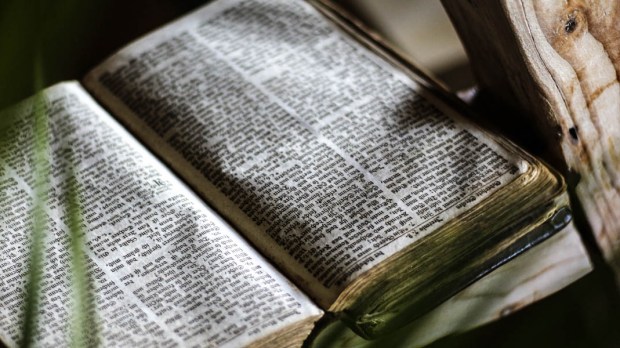So, you’ve decided to make an extra effort and finally read the Bible. Perhaps you have an old family Bible in the house, but you feel like you need a fresh copy, a better translation, something you can read and understand. You take a trip to the local Barnes and Noble or a Catholic bookstore, and the clerk directs you to the religion section.
”I didn’t know there were so many different versions,” you might think to yourself. “Does it matter which one I buy? Which one is best for a Catholic like me? This one looks good, but is it worth it to pay more for it?”
The choice can be daunting. At Barnes and Noble’s website, a search for “Bible,” narrowed down to hardcover versions, yields over 4,700 results.
If the Bible might be considered a guide to life, one might actually need a roadmap to find the version most suitable for the average pilgrim.
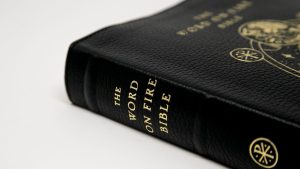
Read more:
The Word on Fire Bible: an evangelization strategy animated by beauty
According to some Catholic scholars and teachers, there is no one “best” Bible for Catholics, but several versions are suitable. Often, it depends on the individual, his background in Bible reading and study, and the way he wishes to use the Good Book.
“It depends on what you want to accomplish with your reading of the Bible,” said John Martignoni, director of evangelization at the Diocese of Birmingham, Alabama, and founder of the Bible Christian Society. “My personal favorite version is the Revised Standard Version Catholic Edition (RSVCE).” Reminiscent of the Douay-Rheims bible, which was the standard Catholic version for many years, the RSV has “a kind of flowery language, even poetic ring to some of the phrases that were just kind of whitewashed out of the New American Bible,” he said.
The New American Bible was first published in 1970 and is the basis for the readings at Mass.
“There are dozens of translations of the Bible into English, none of which is perfect,” said biblical scholar and author Stephen J. Binz. “The phrase ‘lost in translation’ is as true of the Bible as in any form of communication. Whenever we translate from the original languages to another, the full subtlety of meaning or significance is lost. Translators always come to their project with their own limitations and preconceived understandings.”
Because there are two main ways biblical translation is done, Binz suggests it might be a good idea to have more than one Bible in one’s possession: one that was translated more literally, for use in bible study, and one that is not strictly word for word.
“Of those many contemporary translations of the Bible into English, only a few are officially approved by the Catholic Church to be free from inaccuracy and excessive bias,” Binz said. “Among these are the New American Bible, the Revised Standard Version, the New Revised Standard Version, the New Jerusalem Bible, the Contemporary English Bible, and the Good News Bible. The first three of these uses a kind of translation called ‘formal equivalence’ and the last three use a more informal style called ‘dynamic equivalence.’ I always recommend the first three for Catholic Bible study because they translate from the original languages in a way that is more word-for-word from the original languages, however the others sometimes makes for smoother reading.
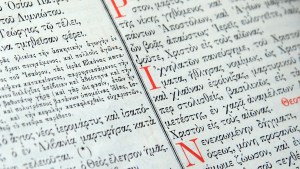
Read more:
Where did the Bible come from?
“The Catholic Church does not prefer one over the other, but allows for all of them to be read for different reasons,” Binz said. “The New American Bible has been chosen for the official texts of the readings for Mass in the United States. The New Revised Standard Version is used for the Mass in Canada, and the Jerusalem Bible for the Mass in the UK and Ireland. The best way to tell if a translation has been approved or not is to look for the words ‘Catholic Edition’ on the cover.This will let you know not only that it is an approved translation, but also that all 73 books of the Catholic Bible are included, not just the 66 books of Protestant editions.
Following complaints about the NRSV’s use of “inclusive language,” much of which stripped the text of its Christological significance, the NRSV was disallowed for liturgical use. The Canadians bishops were already using it as the basis of the lectionary, but it was replaced by a corrected edition, now sold as the NRSV Catholic edition.
Owning multiple versions has another advantage: “Often it is possible to get a better sense of what is being said in a passage by comparing different translations,” Binz pointed out.
Whether any versions are translated in such a way that the language might mislead readers from the true faith, Martignoni advised avoiding the Jehovah Witnesses bible and versions that try to use contemporary language, such as the Good News Bible.
“They’re trying to make it hip or cool or modern, and that’s the primary emphasis of the translators, as opposed to, ‘Well, is this important for doctrinal reasons that we keep this language?’” said Martignoni.
Brant Pitre, Distinguished Research Professor of Scripture at the Augustine Institute in Denver, believes the Revised Standard Version Catholic Edition is the best English translation of the Bible for Catholics.
“No translation is perfect, but the RSVCE strives to be as literal as possible (i.e., close to the original Hebrew and Greek) and yet also use beautiful English,” Pitre said. “Significantly, the RSV is the translation that is utilized in the English Catechism of the Catholic Church.“
The drawbacks of the RSV, though, is that it doesn’t have a lot of explanatory footnotes. Two alternatives, Martignoni points out, are the Navarre New Testament, which has “good solid commentary,” or the Ignatius Study Bible.
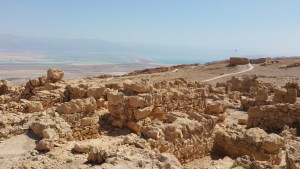
Read more:
The Book of Sirach is the only “signed” book in the Old Testament
Deacon Stephen F. Miletic, a longtime professor of scripture at Franciscan University of Steubenville, has several recommendations, beginning with the Didache Bible, published by Ignatius Press. It contains a running commentary on Scripture, based on and informed by the Catechism of the Catholic Church.
“It’s balanced, it’s true, it’s actually quite good,” Deacon Miletic said.
His next recommendation is the Catholic Study Bible New American, third edition.
“It’s got a lot of great essays in it, and the running commentary, I would say, from the point of view of scholarly opinion, would follow mainstream opinion rather than excessive opinion,” Miletic said. “It’s a snapshot of what scholars are thinking about when this was printed. And it’s a recent edition. They know this is for the American Church and for pastoral purposes, so they’re not going to give you the hottest, Gucci shoes biblical theory. They’re trying to be responsible.”
Finally, Miletic recommends the Oxford Annotated Bible with Apocrypha, which is an ecumenical study Bible.
Like Miletic, David Bosworth, Associate Professor of Old Testament and Biblical Studies Area Director at The Catholic University of America, recommends the Catholic Study Bible (3rd edition; Oxford University Press, 2016). “It uses the New American Bible Revised Edition translation, which (in any edition) includes substantive interpretive and informational notes on the biblical and introduction to each biblical book,” Bosworth said. “This edition by Oxford adds to these the Oxford Bible maps (good maps), multiple topical essays on history, archeology, the lectionary, biblical interpretation, etc., and a ‘reading guide’ which is a small commentary on the whole Bible by Catholic scholars.”
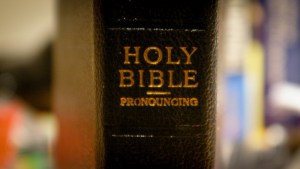
Read more:
How not to read the Bible
The late Robert D. Miller, former Professor of Old Testament at Catholic University, agreed that there is a “best” version of the Bible for Catholics, but that soon there will be a “better” one. While he recommended the New American Bible Revised Edition, he noted that the New Testament portion is being revised.
“In a couple of years there will be another bible, so if somebody buys a bible now, I’m going to tell him to go back to the store in a couple of years and buy it again,” Miller told Aleteia in 2019. “The NABRE’s Old Testament was completely revised in 2011, so if somebody has an NAB from the ‘80s or ‘90s, it’s not the same as the one that I’m recommending. I wouldn’t even recommend that bible. An NAB from the 20th century, especially the Old Testament, there were a lot of problems with it. The translators rearranged verses and all sorts of strange things. But the NAB translation of the Old Testament that was finished in 2011 — in fact, all the others were pulled from the shelf, so no store can sell the pre-2011 version anymore — is great, and really, I think, the best translation of the Old Testament. The New was never as bad as the Old.
“So the current NABRE is fine for the New Testament,” Miller concluded, “and great for the Old Testament, and in a couple of years the New Testament will also be fantastic.”
